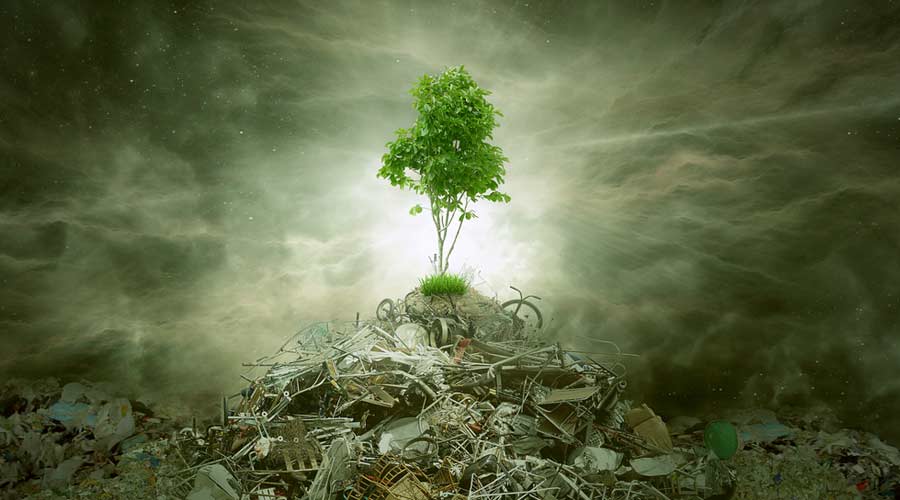
Contributed by Fluent Conveyors
Waste is a global issue. From electronic devices to unused food, a lot of what is thrown away ends up in a landfill. While concerted efforts are being made across the globe to incorporate recycling initiatives, these endeavors can quickly go astray when rubbish isn’t handled with the correct care and attention.
How Much Do We Throw Away?
To get a greater idea about waste and the concern it poses, it’s essential to take a closer look at just how much is thrown away. There are many different forms of waste, with some of the main culprits including:
· Electronic devices
· Hazardous materials
· Discarded food
· Plastic
· Paper and paperboard
· Textiles
· Metal
· Wood
If this waste isn’t correctly managed, there’s ultimately only one destination it will end up: a landfill. Add in factors such as population growth, the continued demand for disposable products, and the short shelf life for everything from smartphones to sneakers, and there are many reasons why waste continues to build at an alarming rate.
The following statistics help to illustrate the worrying picture.
Waste Statistics
Whether you’re analyzing global figures or centering on the United States, the situation is far from healthy – and that’s putting it mildly. Waste is a massive issue, and the following statistics demonstrate why this is the case.
· Annually, 2.12 billion tons of waste is produced across the world.
· Of that waste, 1.3 billion tons is made up of food. That’s over three trillion meals each year wasted, approximately one-third of all food generated for human consumption.
· At least 33 percent of the planet’s waste is not managed in an environmentally safe way. That’s only a conservative figure, which means the percentage could ultimately be even more frightening.
· The average daily waste per person averages 0.74 kilograms worldwide. However, the range for this can vary drastically depending on location. This goes from 0.11 kilograms to 4.54 kilograms.
· The U.S. manages 35.2 million tons of hazardous waste.
· Each year, estimates suggest the U.S. produces around 103 million tons of food waste.
· Due to household leaks, the average U.S. family can waste 180 gallons of water each week, or 9,400 gallons per year. That’s the same amount of water required to wash over 300 laundry loads. On a nationwide scale, household leaks can lead to almost 900 billion gallons of water being wasted annually.
· America currently has a recycling and composting rate of 32.1 percent.
· 25 million plastic bottles are thrown away each hour in America.
The good news is that attitudes are slowly changing. Recycling is becoming more and more prevalent, and this shouldn’t be a surprise based on the numerous benefits gained. As an example, in 2019, the U.S. took 25 million tons of combustible MSW and converted it into approximately 13 billion kilowatt-hours of electricity.
Did you know 57 percent of consumers are open to changing their purchasing habits if it means reducing negative environmental impact? This means if your business can clearly display its effort and commitment to sustainability, it can open the door to attracting new customers.
To make it a reality, you need to know how to manage business waste successfully. Below are a few tips on dealing with common waste types.
Everyday Waste
With everyday waste such as paper and plastic, it is important you sort and correctly store these materials. Having a secure place to store waste is the first step. You will also need to use clearly labeled containers to separate and collect the waste.
You have to take particular care when storing waste, particularly if they’re in a place where the elements can cause issues. If covers are not used, waste can be blown away. If these covers are not waterproof, it could also lead to rain affecting stored materials.
Electronic Waste
Electronic waste, also known as e-waste, is going to become an increasing concern for businesses. Fortunately, a business can take steps right now, such as moving a lot of technology and processes to the cloud, which can immediately reduce their electronic waste.
If you have electronic waste which has no future purpose for your business, there are various steps you can take. There are specialist third-party electronics recyclers that can take care of these materials in a cost-effective, environmentally friendly way. There’s also the possibility of trading-in devices for upgrades or donating them to local charities to expand their lifespan.
Hazardous Waste
As you would expect, extra steps have to be taken when handling and processing hazardous waste. If this hazardous waste was to cause damage or harm to others, it could lead to significant ramifications for your business. Materials deemed hazardous include chemicals, solvents, batteries, oils, and pesticides.
First, begin by ensuring all hazardous waste is separated from non-hazardous waste. You will then need to store the waste responsibly. That means using applicable containers, keeping them out of the elements, and storing them in a safe, secure place. Once you have used an authorized waste carrier to handle your hazardous waste, you’ll have to keep a record of any waste transfers you make.
For the complete guide, click here.

 Celebrating BSCAI's 60th Anniversary eBook
Celebrating BSCAI's 60th Anniversary eBook The Down and Dirty on Cleaning in Virus Season
The Down and Dirty on Cleaning in Virus Season How Surfactant Use is Expanding in Commercial Cleaning
How Surfactant Use is Expanding in Commercial Cleaning